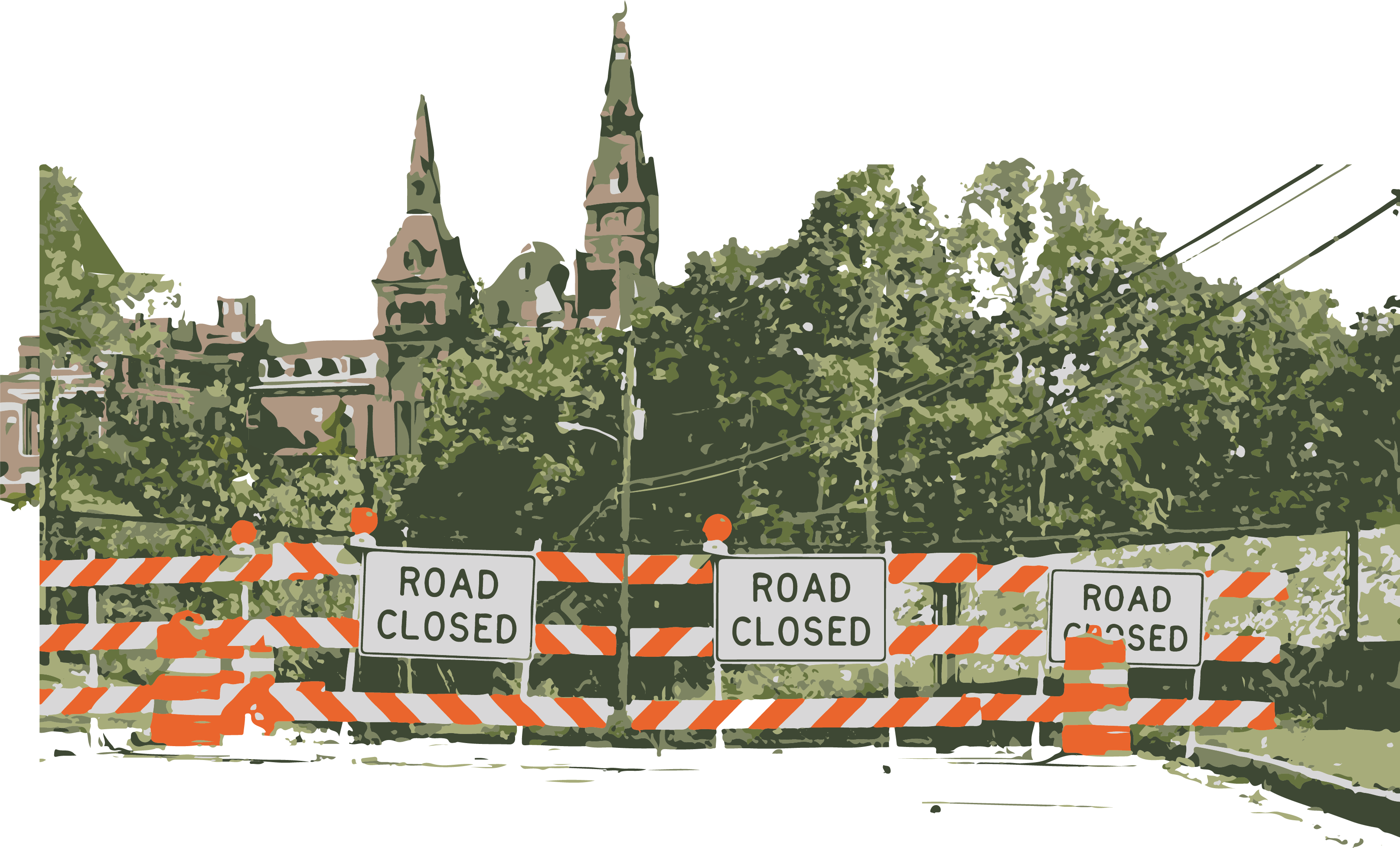In the wake of the June 2023 Supreme Court ruling ending affirmative action, Georgetown has admitted its first class of applicants in a new college admissions landscape. Without the explicit consideration of students’ racial identities, many students of color were left to navigate how to present this salient detail of their identity in their Georgetown application by themselves.
For committed student Karinna Loaz (MSB ’28), a Georgetown acceptance felt almost impossible without affirmative action. As a first-generation and low-income (FGLI) student, Loaz felt it was difficult to have a shot at a top university due to the lack of educational resources she was provided relative to her wealthier peers, like quality college counseling and SAT tutoring. The end of affirmative action amplified her concerns, both about how to get accepted into college and fitting in once she got there.
Without affirmative action, Loaz explained that in order to make her background a part of her application, she had to be very explicit about her race and identity.
“So while I was doing my application, knowing that I wasn’t going to be including my race, I definitely overcompensated a little, especially in a lot of the essay writing,” Loaz said in an interview with the Voice. “I truly felt that in trying to make it visible to the average admissions officer, that I kind of ended up making a parody of myself.”
As of 2022, Hispanic students accounted for 24% of the American college-aged population and made up only 6% of the Class of 2026. Similarly, Black college-aged people make up 14% of the same population, while constituting only 4.9% of Georgetown’s last incoming class, the Class of 2026.
This incoming student body was supported in their application process by the university’s office of undergraduate admissions which hosted online webinars, info sessions, and student speaker panels. Even with these resources, Georgetown’s application process has faced criticism from FGLI students in the Class of 2028.
For Abdi Hernandez (MSB ’28), a first-generation Latino student admitted to Georgetown through the regular decision round, balancing time to research the unique application process while working to support his family was extremely challenging. Georgetown, unlike over 1,000 universities, is not on the Common Application, a critique reiterated by several generations of Hoyas.
“A lot of us have to work to support our families,” Hernandez said. “There’s not a lot of time to do research and look into things.”
Loaz and Hernandez felt that the university’s unique application created extra obstacles for FGLI students.
“I think it’s a way to make sure the students who are applying are passionate about Georgetown, but it does add that extra barrier to students who are just learning the college application process and they don’t have a parent or someone in their circle who has gone through it,” Loaz said.
In addition, FGLI students also expressed frustration with Georgetown’s SAT policy—which was reinstated after the school went test-optional during the COVID-19 pandemic. For FGLI students, accessing test prep resources is difficult and costly. “I have really good grades at school, but I simply did not have the time or resources to get an SAT tutor, or to actually study,” Loaz said.
Black and Hispanic students are less likely to excel on the test than their white counterparts: of high school testers who scored a 700 or above on either section in 2020, only 6% identified as Hispanic and 1% identified as Black. Historically, the SAT was used to exclude Black students from attending elite universities.
Currently, Georgetown remains one of a fraction of elite institutions in the country to require standardized test scores. Loaz emphasized that affirmative action was a key way to support FGLI students when the other elements of its application are difficult or exclusive.
Moreover, FGLI student yield is also a struggle. Student yield refers to the amount of students who actually commit to attending Georgetown. This year, the Free Application for Federal Student Aid (FAFSA) was released three months after its usual release date of Oct. 1, delaying financial aid packages and making prospective students wary of committing to Georgetown in favor of a more affordable option.
Georgetown’s endowment is smaller than other competitive schools, which can also shape students’ financial aid options. Schools with more robust endowments have the ability to offer more attractive financial aid packages—which is impactful to students who would face debt otherwise.
When asked about Georgetown’s efforts to maintain and expand diversity without affirmative action, a university spokesperson pointed to the geographical diversity of the Class of 2028 student body.
“Students were admitted from all 50 states, the District of Columbia and Puerto Rico. Our international admitted students come from 94 different countries of citizenship, and 513 of our admitted students are dual citizens,” the university spokesperson wrote in an email to the Voice.
The elimination of affirmative action in college admissions has renewed scrutiny against aspects of the admissions process that some say are inequitable, like legacy admissions. According to a university spokesperson, Georgetown’s admissions rate this year was 12%, and while internal demographic data on the admitted class is unavailable, legacy students empirically are admitted at a rate 2.9 times higher than other applicants.
At a primarily white institution where white students represent 47% of the population, some Hoyas are taking action against legacy admissions, which they say favors wealthier, white students.
“We must take action in order to ensure that there is more equity in our admission process than that. Our institution must actually reflect our country,” Darius Wagner, a member of Hoyas Against Legacy, said.
Ultimately, for students in the Class of 2028—and other Hoyas—the issue of accessible college admissions remains personal.
“I come from a family where nobody has gone to college really, or if they did, they dropped out,” Hernandez said. “[Affirmative action] really helped us, it was a tool. To have that taken away from us had the odds stacked against us even more than they already were.”





